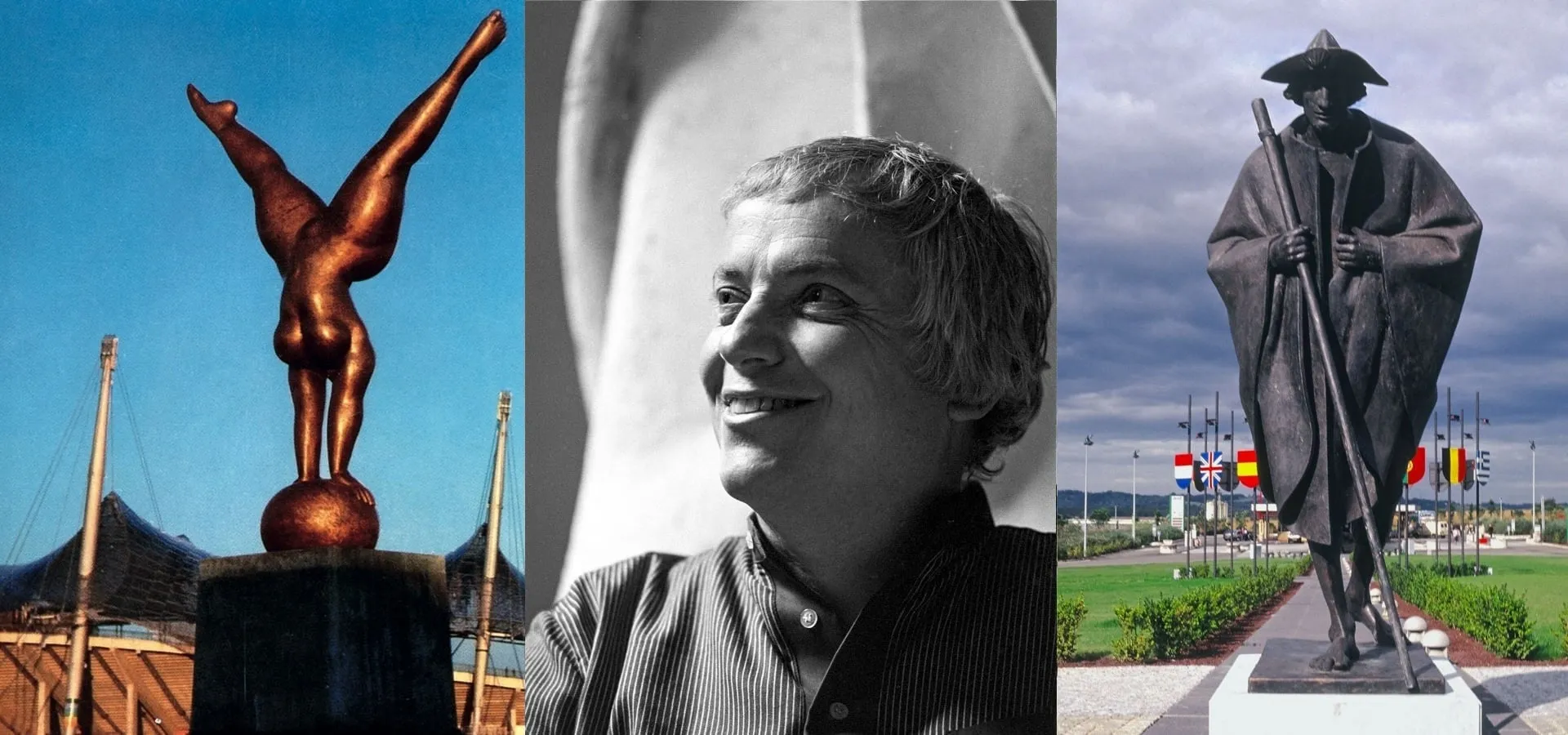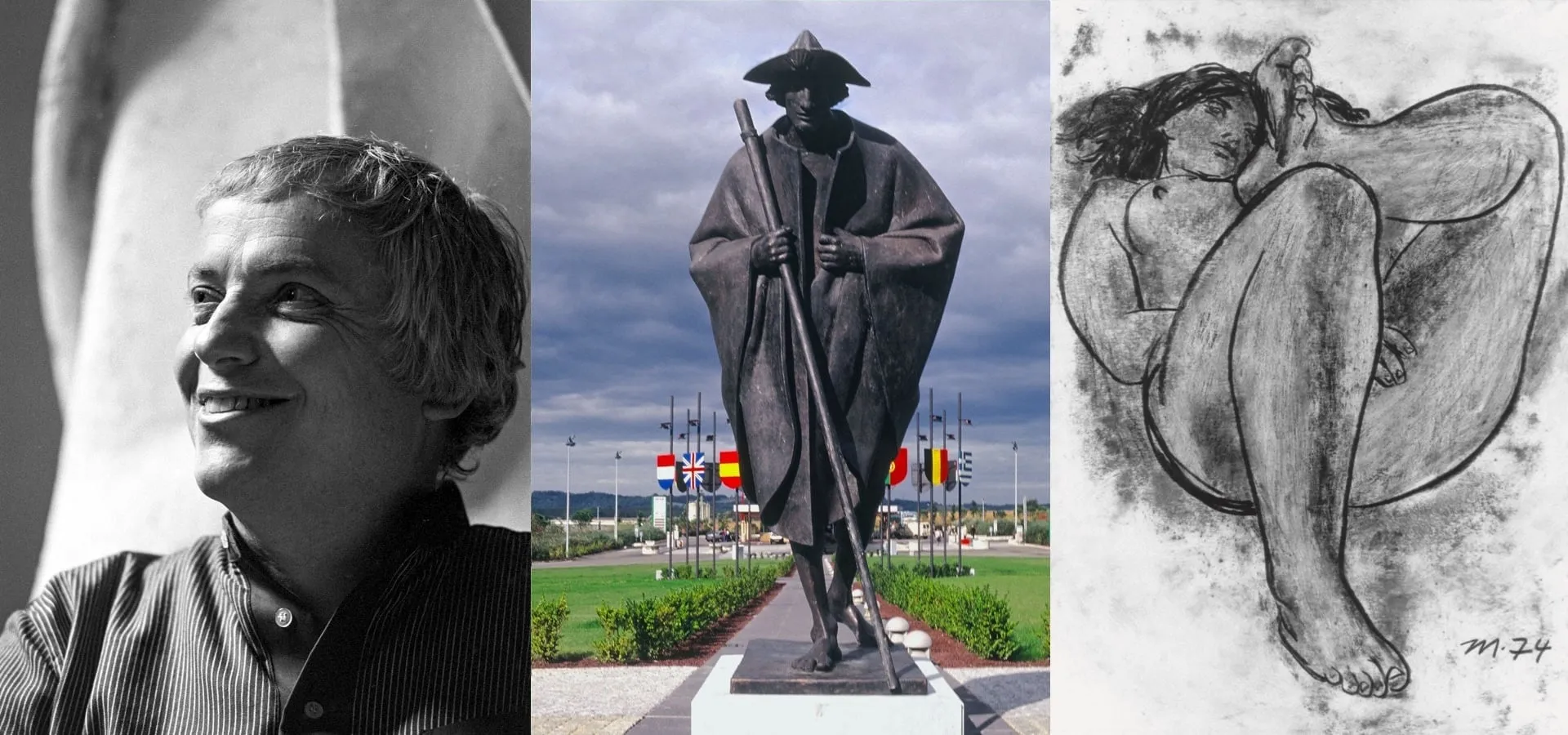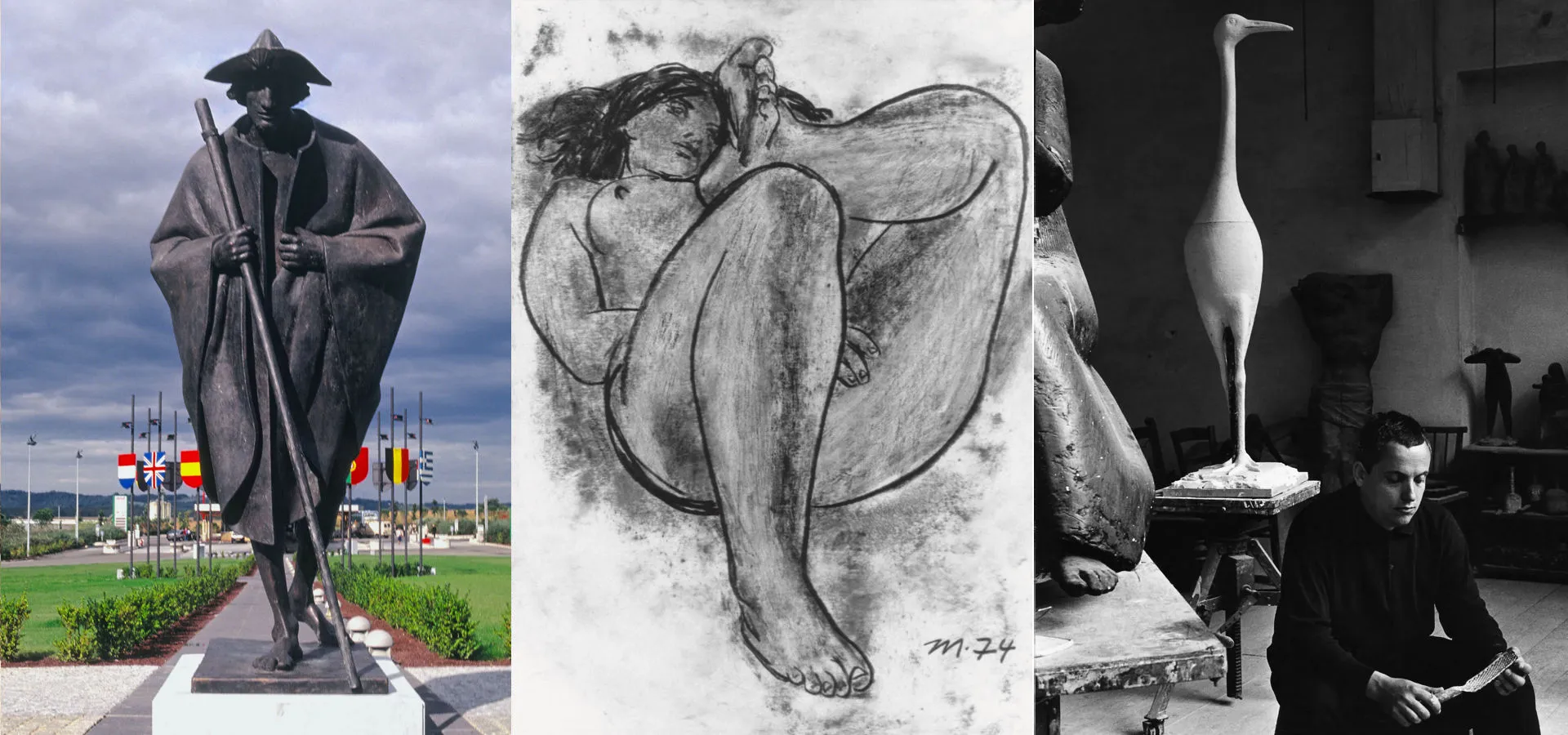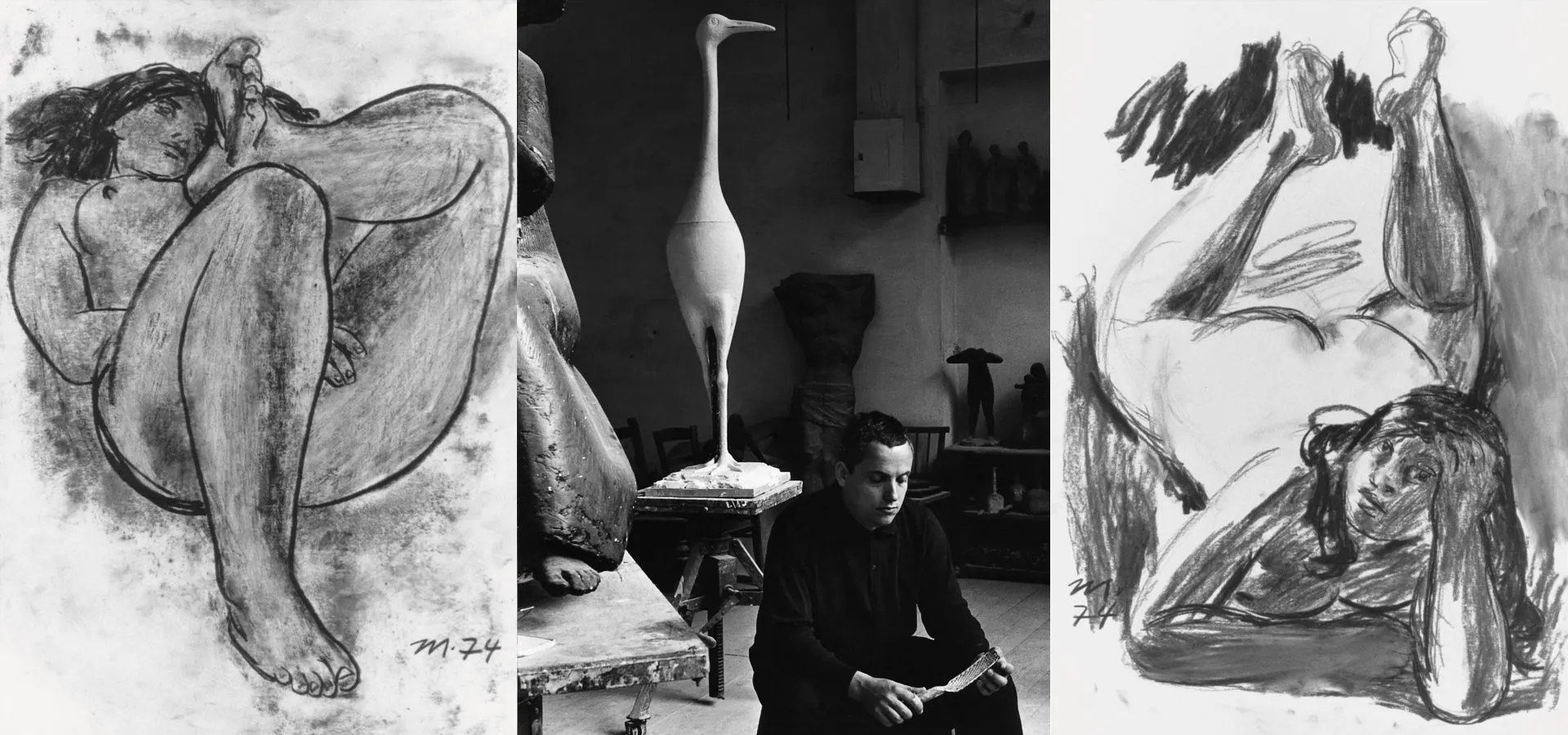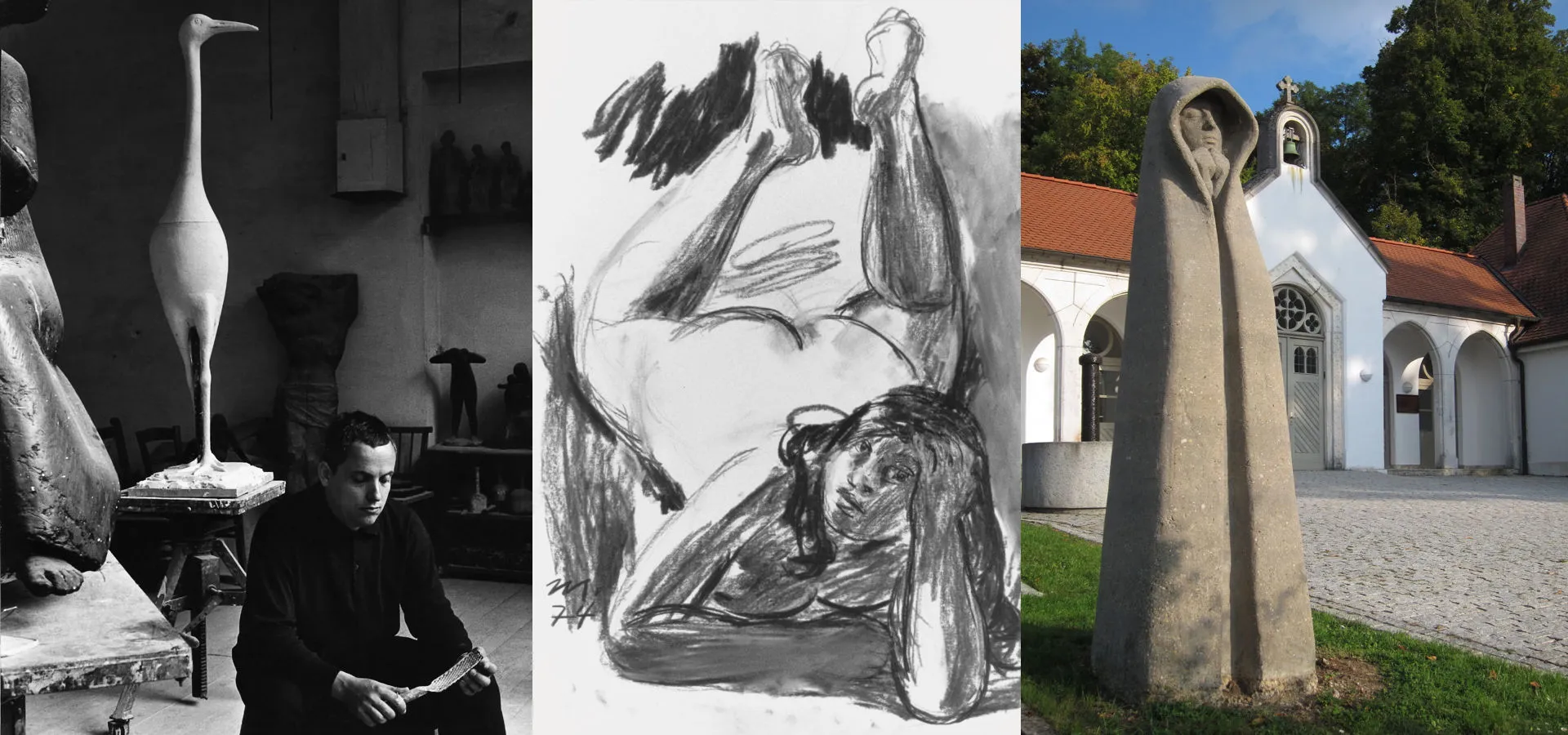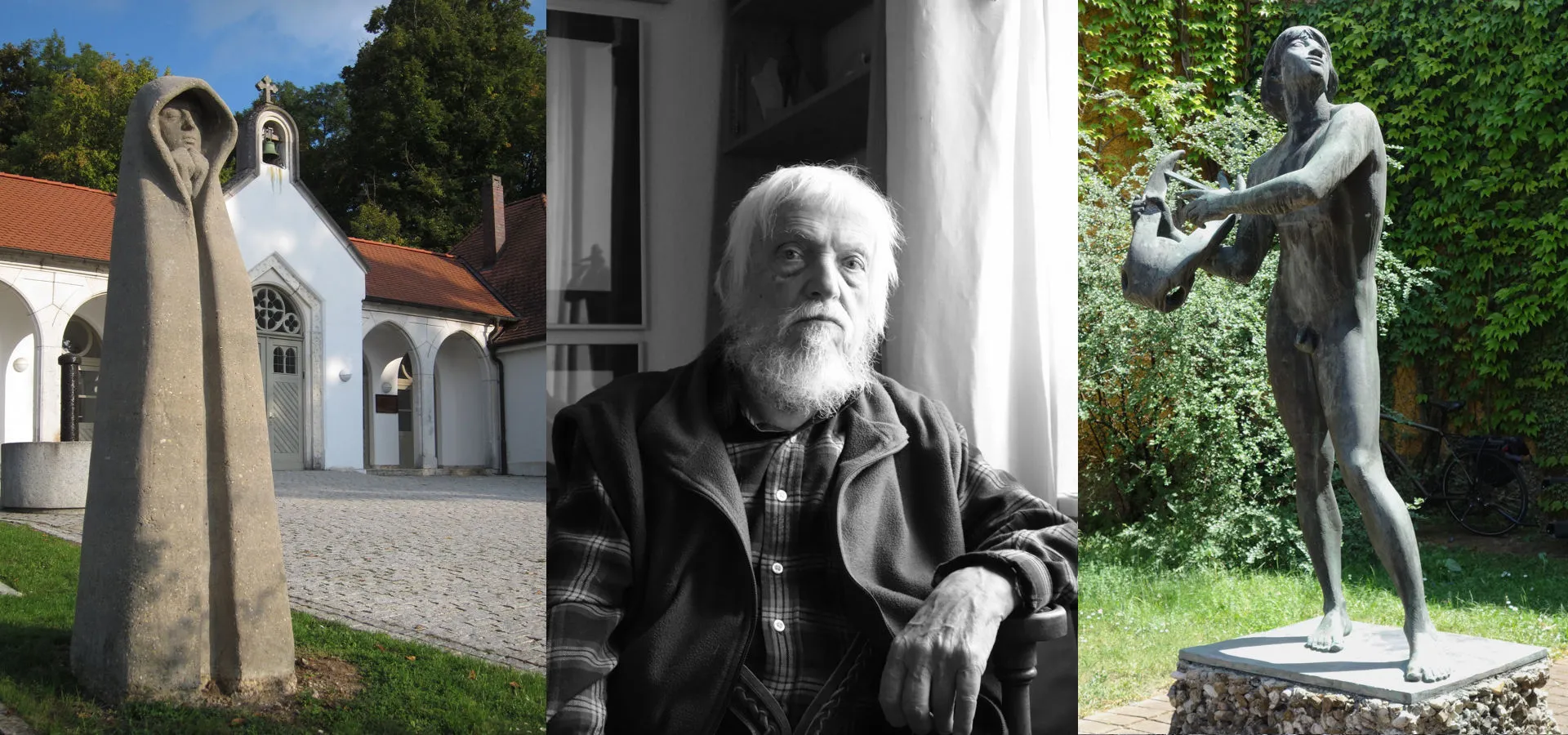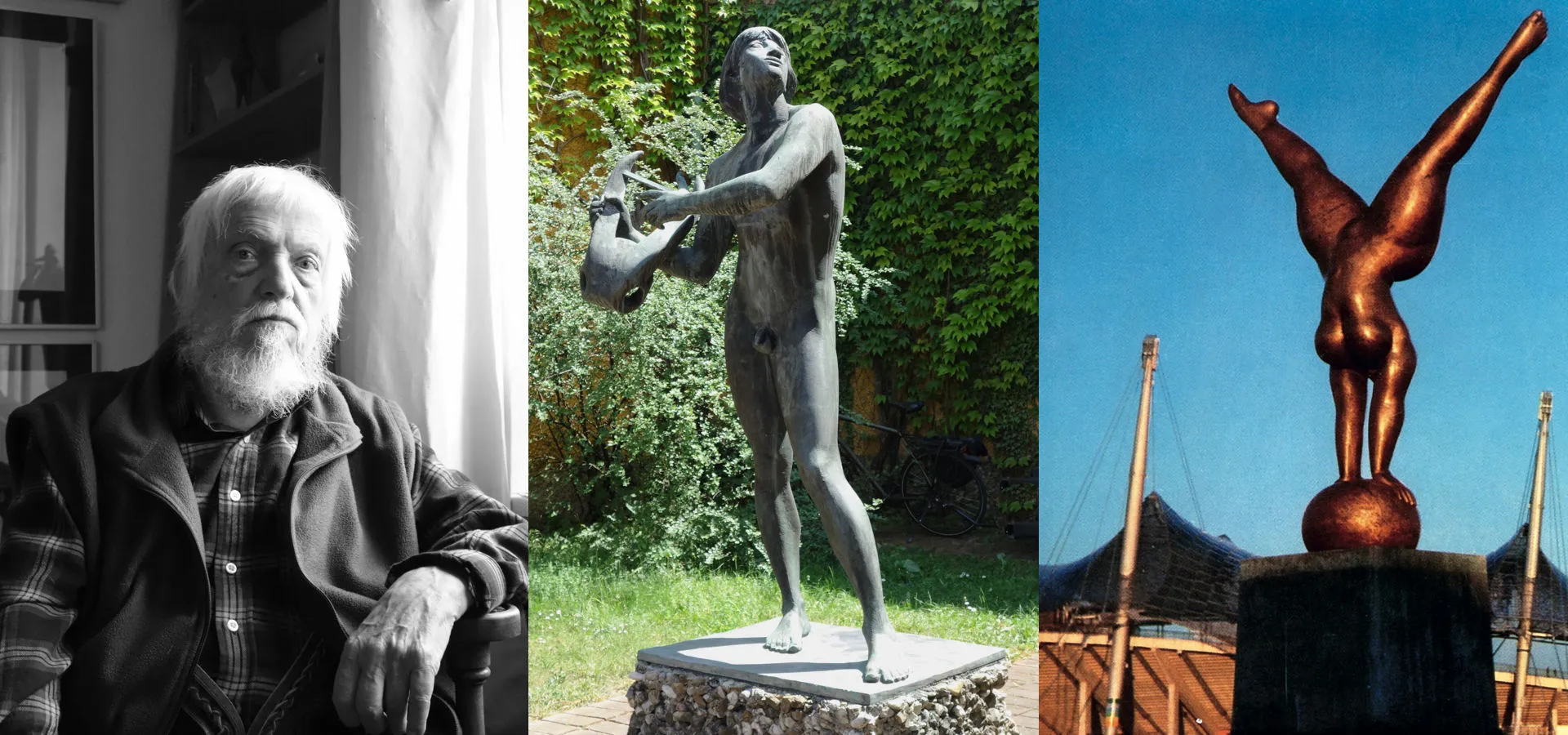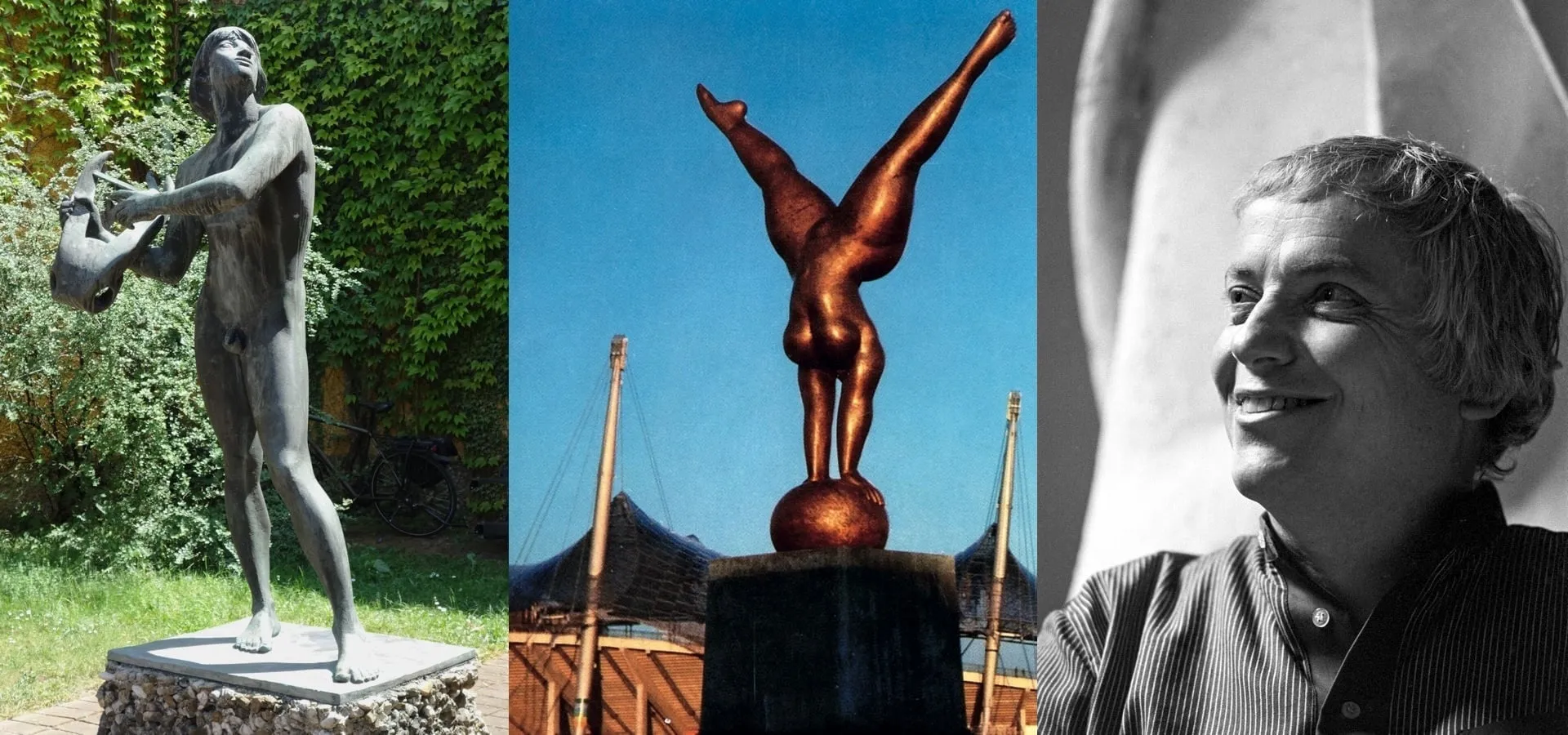"To endure in the face of a subject, the fragment of life that we have chosen as the subject of our work, until we extract from it or from ourselves the unique and exact essence.
To endure in the face of life, sustaining a state of mind that has nothing to do with the vain and useless, the easy, the coteries, the mutual eulogies, the coffee house gossip.
To endure in a blind, joyous and absurd faith in art, as in a task with no explicable meaning, which nevertheless must be accepted bravely, just because, as one accepts destiny".
J. C. Onetti
Life and legacy of Martin Mayer
Landmarks, meeting places, photo subjects, sights in the truest sense of the word - Martin Mayer Martin Mayer, 1966. Portrait by Herbert List. has created many: The Olympia Triumphans
Martin Mayer, 1966. Portrait by Herbert List. has created many: The Olympia Triumphans  at Munich's Olympic Park, the St. James pilgrim
at Munich's Olympic Park, the St. James pilgrim at Speyer, the Landavia
at Speyer, the Landavia  at Landau, the Luther statue
at Landau, the Luther statue  at Weißenburg. His Sitting Boar
at Weißenburg. His Sitting Boar 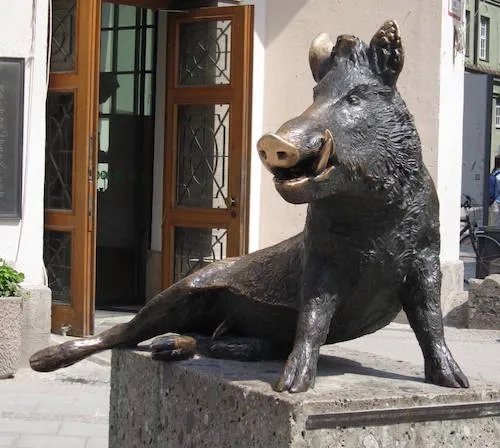 (not a copy, but one of the first commissioned works and as such a thematic "outlier") at Neuhauserstraße is Munich's unofficial lucky charm and one of the city's most photographed motifs.
(not a copy, but one of the first commissioned works and as such a thematic "outlier") at Neuhauserstraße is Munich's unofficial lucky charm and one of the city's most photographed motifs.
With some 30 mostly larger-than-life sculptures installed in public spaces, Martin Mayer ranks among the most renowned German sculptors of the 20th century. Wandering freely between seemingly contradictory worlds – on the one hand real life, often unclothed women here; on the other robed, mostly spiritual men there – Martin Mayer combined sculptural tradition and artistic innovation like few others.
Sculptural tradition and artistic innovation
Tradition in the sense of continuing his quite obvious artistic genealogy (Hildebrand, Lehmbruck, Barlach, Marcks); accompanied by the "conservative" conviction that in the fine arts – as undoubtedly in all other forms of art – the indispensable prerequisites alongside genuine creativity are craftsmanship, i.e. the mastery of tools, materials and techniques, as well as an extensive knowledge of historical predecessors.
Artistic innovation by delevoping his own, singular, formal language: an artistic signature that makes his bronzes as new, as different, as unique and as unmistakable as those of Maillol, Marini or Moore. Innovation also through the inventiveness of figurative, often very simple poses: Virtually every sculpture shows an emblematic, symbolic figure – never just a naturalistic copy.
Abstraction without equating abstract and non-representational
His prints, too, illustrate that Martin Mayer's artistic striving for knowledge, following a very original intention of sculpture, was primarily directed at form: Exaggeration, reduction, combination, re-formation, abstraction – without equating abstract and non-representational – of natural curves, shapes and surfaces for the purpose of revealing or unveiling their elementary, essential characteristics.
The art market, the culture industry, artists' panels etc. were foreign to Martin Mayer. He he could only partially come to terms with the idea of sculpture as a medium of political discourse. He was amused that the core sentence of his artistic credo – "De naturam ad artem, de artem ad naturam", inscribed in 1972 on the ball held by the Olympia Triumphans – served as the motto of the Venice Biennale in 1978.
Iconic images of feminine self-determination
Nevertheless his œuvre offers a broad scope for interpretation, even to an audience more concerned with conceptual messages and/or verbatim content:
The vigorous women are considered as iconic images of feminine self-determination. The both contemplative and resolute men (artistically detached from their confessional context) depict the antipodes of greed and thoughtlessness. The work as a whole can be interpreted as a form of sculptural social criticism by means of unpretentious pleas for a mindful, peaceful, meaningful life.
